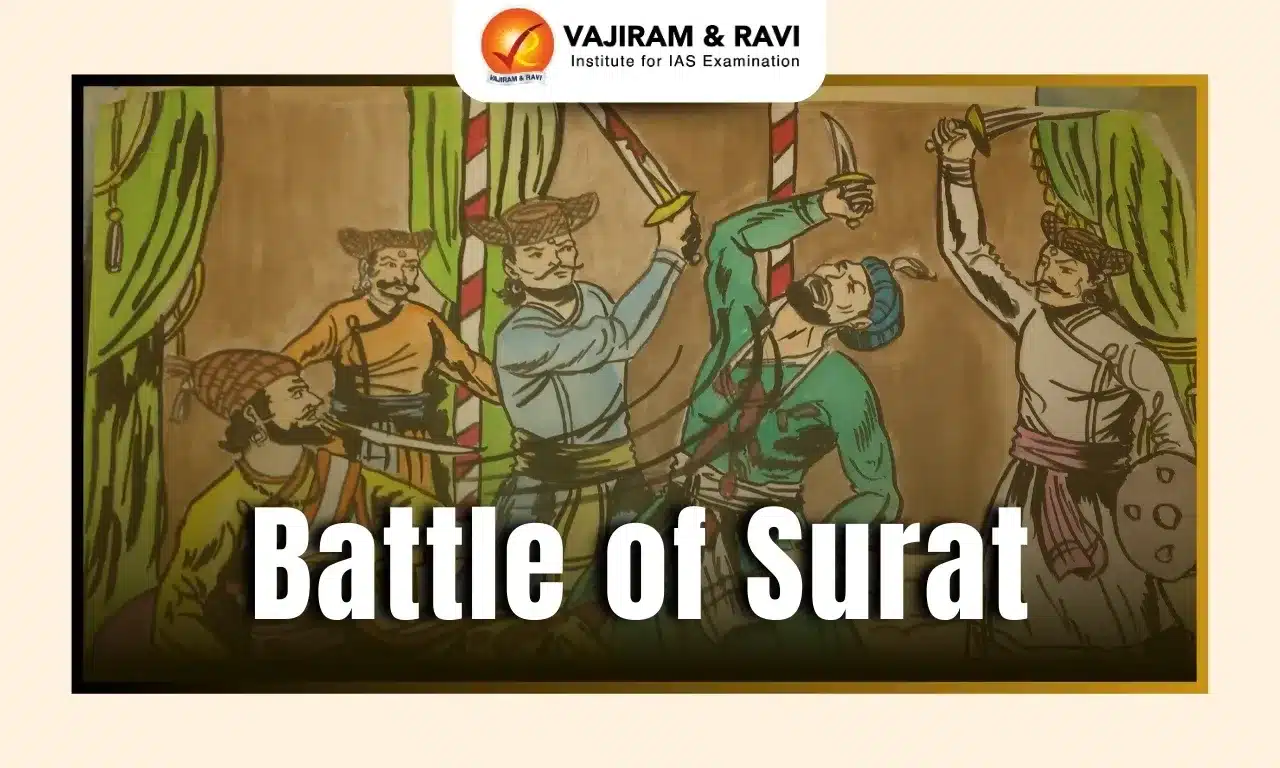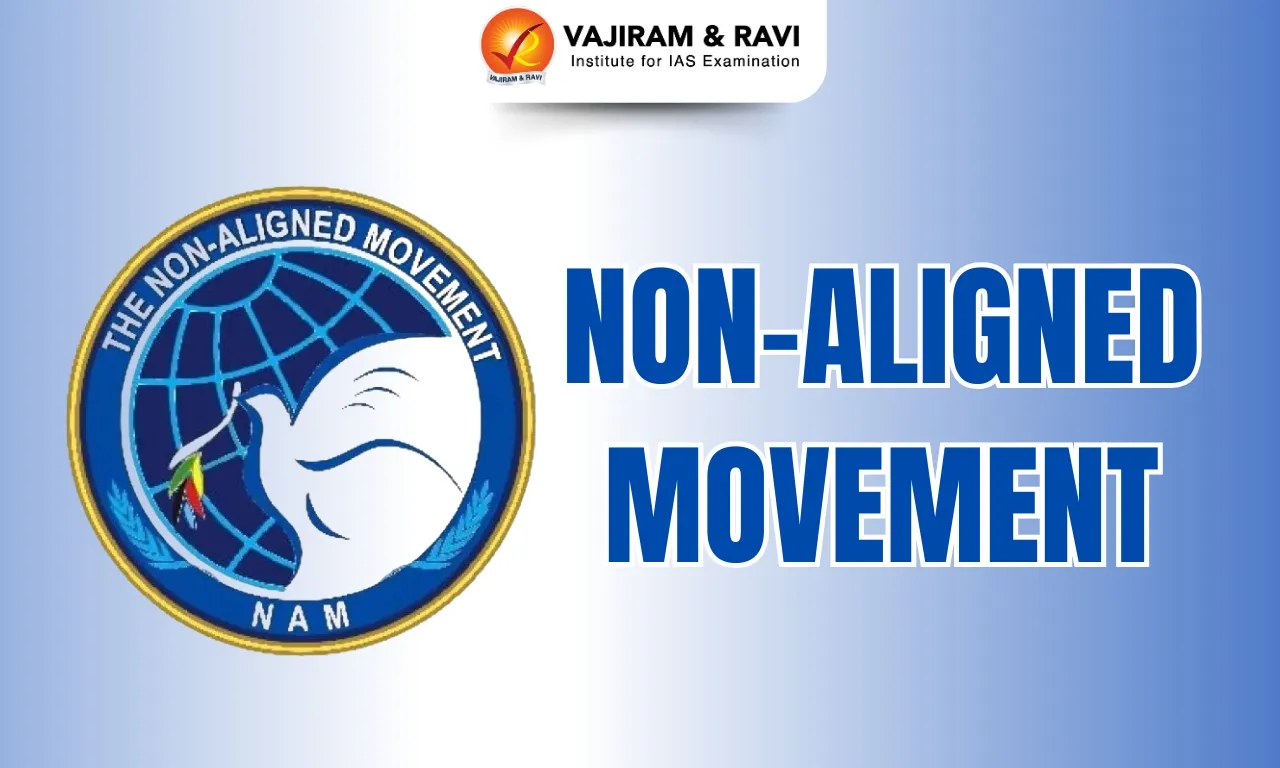The Battle of Surat fought on January 5, 1664 in between the Maratha and the mughal empire, was led by Shivaji Maharaj. Surat, an important port city and trade center of Mughals, was attacked by the Marathas. Prince Muazzam (Emperor Aurangzeb) the governor in chief of Gujarat fought against the marathas. Eventually the Marathas won the war and the Surat city was ransacked for six days. In this article, we are going to cover the Battle of Surat History, the components of the war and significant consequences.
Battle of Surat History
The Battle of Surat was an important event that happened on 5 February 1664. At this time, the Mughal Empire was at its highest power , while the Maratha Empire was an emerging regional force. Shivaji launched this battle to increase his territory and challenge mughal authority.
At the same time, Shaista Khan, the mughal governor, engaged in a war against the Marathas in the Deccan. This war weakened the financial condition of the Maratha kingdom. In order to revive the treasury, Shivaji created a plan to attack Surat, a wealthy Mughal stronghold and thriving port city. The goal was to conquer and plunder the riches and transfer the wealth to Raigad Fort, the primary residence.
Mughal Forces at Surat
The city’s defenses were weak, and Inayat Khan, the local Mughal Subedar, could only deploy 1,000 armed men for protection. However, this proved insufficient against the swift and strategic attack launched by Shivaji. As the battle unfolded, the Mughal garrison was overwhelmed, and Shivaji’s forces set the regional shipping sector ablaze, dealing a severe blow to Mughal trade and influence.
Maratha Forces at Surat
Shivaji led a well-organized force of over 8,000 cavalrymen, accompanied by his trusted commanders. The Marathas’ mobility and guerrilla tactics allowed them to swiftly overrun the city, ensuring a decisive victory.
Battle of Surat Series of Events
The Maratha War of Battle of Surat was a struggle between the Marathas and the Mughal Empire. Daud Khan and Shaista Khan had attacked the Pune-Supa region, setting the entire village on fire. Shaista Khan continued to seize control of Lal Mahal in Pune, looting the wealth and enforcing the mughal dominance in the Deccan. Aurangzeb with an aim to consolidate his rule, targeted the vulnerable people of Pune and Supa. In response, Chhatrapati Shivaji devised a bold strategy to attack Surat- the wealthiest trade hub. The decision followed the night raid on Shaista Khan during which he amputated the thumb of Mughal general. Instead of launching a direct assault on the Surat Fort, Shivaji initially demanded tribute from the city’s wealthy merchants. However, upon their refusal, he launched a full-fledged attack on the city.
The element of surprise played a crucial role, leaving the Mughal chieftains unprepared. Rather than facing Shivaji’s forces head-on, they sought refuge inside the Fort of Surat. Over the course of three days, the Marathas plundered the city, targeting the riches of traders and merchants from Mughal Gujarat Subah, Portuguese settlements, and other commercial hubs. The residences of prominent traders like Virji Vora, Haji Zahid Beg, and Haji Kasim were raided, yielding gold, silver, pearls, diamonds, rubies, and emeralds.
Notably, Shivaji refrained from looting the homes of foreign missionaries, demonstrating his strategic and principled approach to warfare. The Battle of Surat not only boosted Maratha finances but also sent a strong message to the Mughal Empire, proving that Shivaji was a formidable force against their expansionist ambitions.
Battle of Surat Series of Loots by Chhatrapati Shivaji
The first is of Father Ambrose, a Catholic monk. Shivaji was informed that this person’s home was deserving of looting. Father Ambrose was a devout man, and Chhatrapati Shivaji was aware of this and refrained from looting his home. His home remained unharmed during the battle of Surat. The second businessman was Mohandas Parekh. He was also one of Surat’s wealthiest businessmen. It so happened that Parekh had passed away a few months earlier and that his wife was now his sole heir. The merchant has also been a big humanitarian throughout his life. Shivaji immediately outlawed the robbing of his home or of his valuables and, in fact, stationed guards to ensure that this would not occur.
Battle of Surat Aftermath
In this Maratha War, before the Mughal Empire in Delhi was informed of the battle of Surat, all of this loot had already been transferred to the Deccan. Later, the Maratha state was built up and strengthened with this wealth. The Mughal Emperor Aurangzeb was angered by this occurrence. After Shivaji’s invasion of the Port of Surat, trade did not thrive as much, which resulted in a decrease in the Mughal Empire’s revenue. The battle of Surat resulted in the victory of the Maratha Empire against Mughal forces.
The second sacking of Surat occurred in 1670. This time, Shivaji was directly engaged in battle with Mughal forces deployed throughout the Sahyadris. He was also squaring off against Janjira Siddi. The Mughal boats from Surat attacked the back of his soldiers when they were fighting the Siddi. Shivaji responded by attacking Surat. This time, Lohagad, which is close to Pune, received the loot.
Last updated on January, 2026
→ Check out the latest UPSC Syllabus 2026 here.
→ Join Vajiram & Ravi’s Interview Guidance Programme for expert help to crack your final UPSC stage.
→ UPSC Mains Result 2025 is now out.
→ UPSC Notification 2026 is scheduled to be released on January 14, 2026.
→ UPSC Calendar 2026 has been released.
→ UPSC Prelims 2026 will be conducted on 24th May, 2026 & UPSC Mains 2026 will be conducted on 21st August 2026.
→ The UPSC Selection Process is of 3 stages-Prelims, Mains and Interview.
→ Prepare effectively with Vajiram & Ravi’s UPSC Prelims Test Series 2026 featuring full-length mock tests, detailed solutions, and performance analysis.
→ Enroll in Vajiram & Ravi’s UPSC Mains Test Series 2026 for structured answer writing practice, expert evaluation, and exam-oriented feedback.
→ Join Vajiram & Ravi’s Best UPSC Mentorship Program for personalized guidance, strategy planning, and one-to-one support from experienced mentors.
→ UPSC Result 2024 is released with latest UPSC Marksheet 2024. Check Now!
→ UPSC Toppers List 2024 is released now. Shakti Dubey is UPSC AIR 1 2024 Topper.
→ Also check Best UPSC Coaching in India
Battle of Surat FAQs
Q1. Why did Shivaji sack Surat?+
Q2. How did Surat get its name?+
Q3. How many times did Shivaji loot Surat?+
Q4. When did the British capture Surat?+
Q5. Why is Surat called the Diamond City?+
Tags: Battle of Surat

















